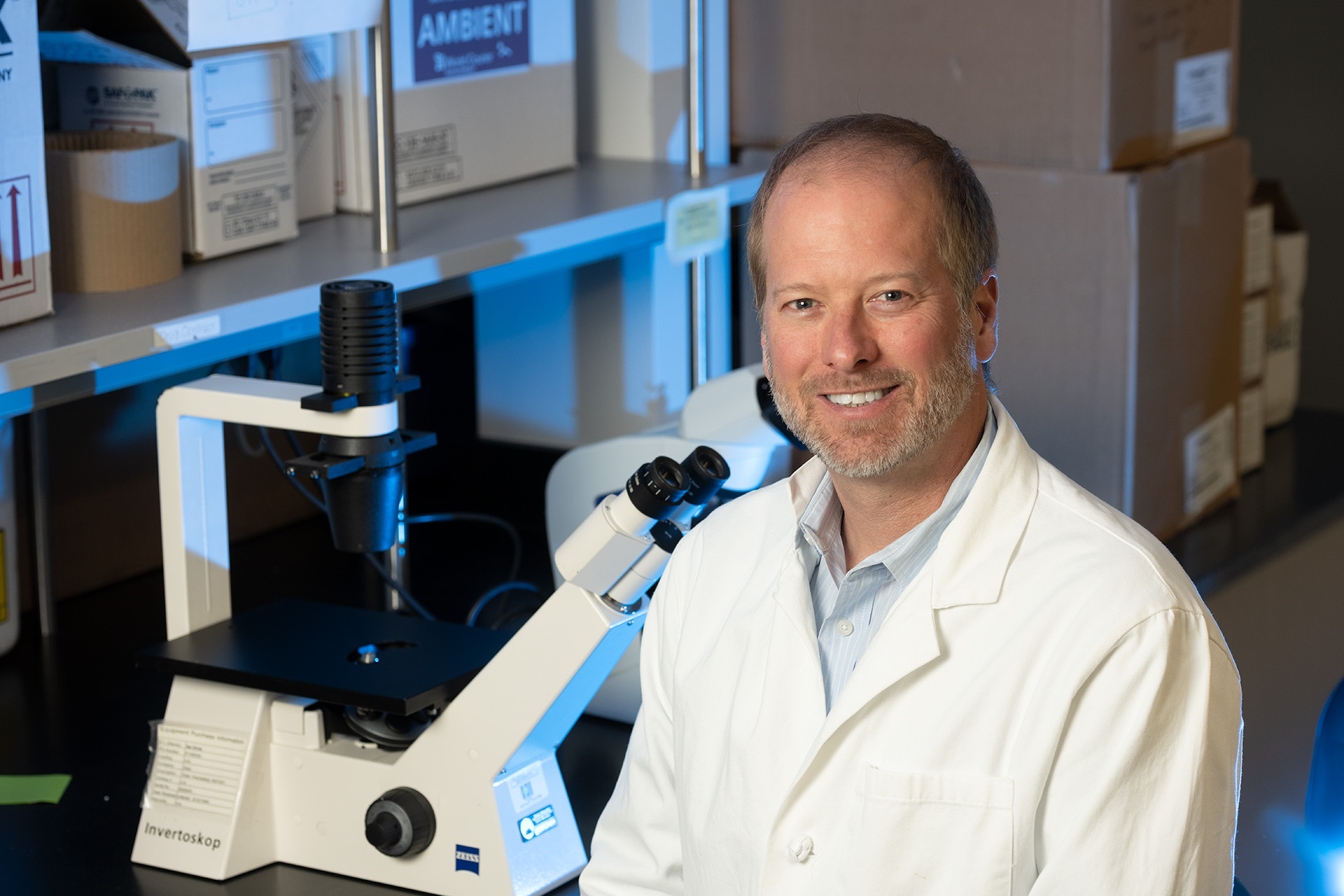
Gregory Robertson, an assistant professor in the Department of Microbiology, Immunology and Pathology at CSU, is one of the first authors on the study. He said that the effectiveness of tuberculosis treatments has been judged by studying tissue cultures from infected patients. Photo: John Eisele/CSU Photography
Tuberculosis, a disease caused by the bacterium Mycobacterium tuberculosis, is a serious global health threat. The disease caused an estimated 1.5 million deaths in 2019 and current methods often fail to predict treatment outcomes in patients.
A study published May 18 in Nature Communications provides an important new basis for comparing the effectiveness of different tuberculosis treatments and accelerating the development of shorter treatment regimens. The research team was led by scientists at the University of Colorado Anschutz Medical Campus with Colorado State University’s Mycobacteria Research Laboratories and the University of California San Francisco.
In the study, researchers measured the degree to which drugs used to treat tuberculosis interrupt the synthesis of ribosomal RNA (rRNA), which is required for the protein-making machinery of the bacterium.
The team discovered that drugs and drug regimens that shorten the duration of tuberculosis treatment inhibit Mycobacterium tuberculosis rRNA synthesis more than less potent drugs and regimens. Their new measure, the rRNA synthesis (RS) ratio, provides an urgently needed molecular metric of drug activity based on a key physiologic property at the level of microbes, rather than measuring bacterial burden. Current treatment regimens range in duration from six months to several years for some drug-resistant tuberculosis infections.
Gregory Robertson, an assistant professor in the Department of Microbiology, Immunology and Pathology at CSU, is one of the first authors on the study. He said that the effectiveness of tuberculosis treatments has been judged by studying tissue cultures from infected patients.
“This historical method correlates poorly with what we care about most, which is whether tuberculosis patients are durably cured,” he said.
Dr. Nicholas Walter, also a first author on the paper and an associate professor at the University of Colorado Anschutz Medical Campus, said that a key roadblock that holds back new tuberculosis treatments is the inability to accurately measure how effectively different treatments shorten the time needed to cure tuberculosis.
“Without improved tools to measure and compare the effectiveness of drug treatments, the evaluation and roll-out of new combination drug treatments will continue to proceed slowly,” he added.
The new RS ratio provides a readout of drug effect that researchers hope will open a new era in understanding the use of antibiotics.
“Measuring a key physiologic property of pathogens provides an innovative way of thinking beyond conventional measures of bacterial burden,” said senior author Martin Voskuil, associate professor at the University of Colorado Anschutz Medical Campus.
The new approach can also enable more intelligent design and evaluation of candidate drug combination regimens, accelerating the development of treatments that can cure tuberculosis faster.
“This has crucial implications for combatting the global tuberculosis epidemic,” said co-author Dr. Payam Nahid, professor and director of the University of California San Francisco Center for Tuberculosis.
This research stems from a unique translational medicine collaboration known as the Consortium for Applied Microbial Metrics led by scientists at the University of Colorado Anschutz Medical Campus, CSU and UCSF. The consortium combines insights from in vitro, animal and human studies to identify better tuberculosis treatments.
Sarah Born, a postdoctoral fellow at the University of Colorado Anschutz Medical Campus, is also a first author on the study.
Additional co-authors from CSU include Victoria Ektnitphong, Michelle Ramey, Allison Bauman, Carol Wilusz, Brendan Podell and Anne Lenaerts.
CSU Science Writer Mary Guiden contributed content for this story, which was originally developed by Julia Milzer from the University of Colorado Anschutz Medical Campus.
About the University of Colorado Anschutz Medical Campus
The University of Colorado Anschutz Medical Campus is a world-class medical destination at the forefront of transformative science, medicine, education, and patient care. The campus encompasses the University of Colorado health professional schools, more than 60 centers and institutes, and two nationally ranked independent hospitals that treat more than two million adult and pediatric patients each year. Innovative, interconnected and highly collaborative, together we deliver life-changing treatments, patient care, professional training, and conduct world-renowned research. For more information, visit www.cuanschutz.edu.
About the Mycobacteria Research Laboratories at CSU
The Mycobacteria Research Laboratories was founded some 25 years ago by Patrick Brennan and other scientists with the intent of generating an internationally recognized center of excellence for the study of mycobacterial diseases and pathogens. Since then, the MRL has been at the forefront of mycobacterial fundamental and translational research. Research programs in the MRL utilize state-of-the-art techniques and facilities to address tuberculosis vaccine and drug development and leprosy and tuberculosis diagnostics, among other topics.